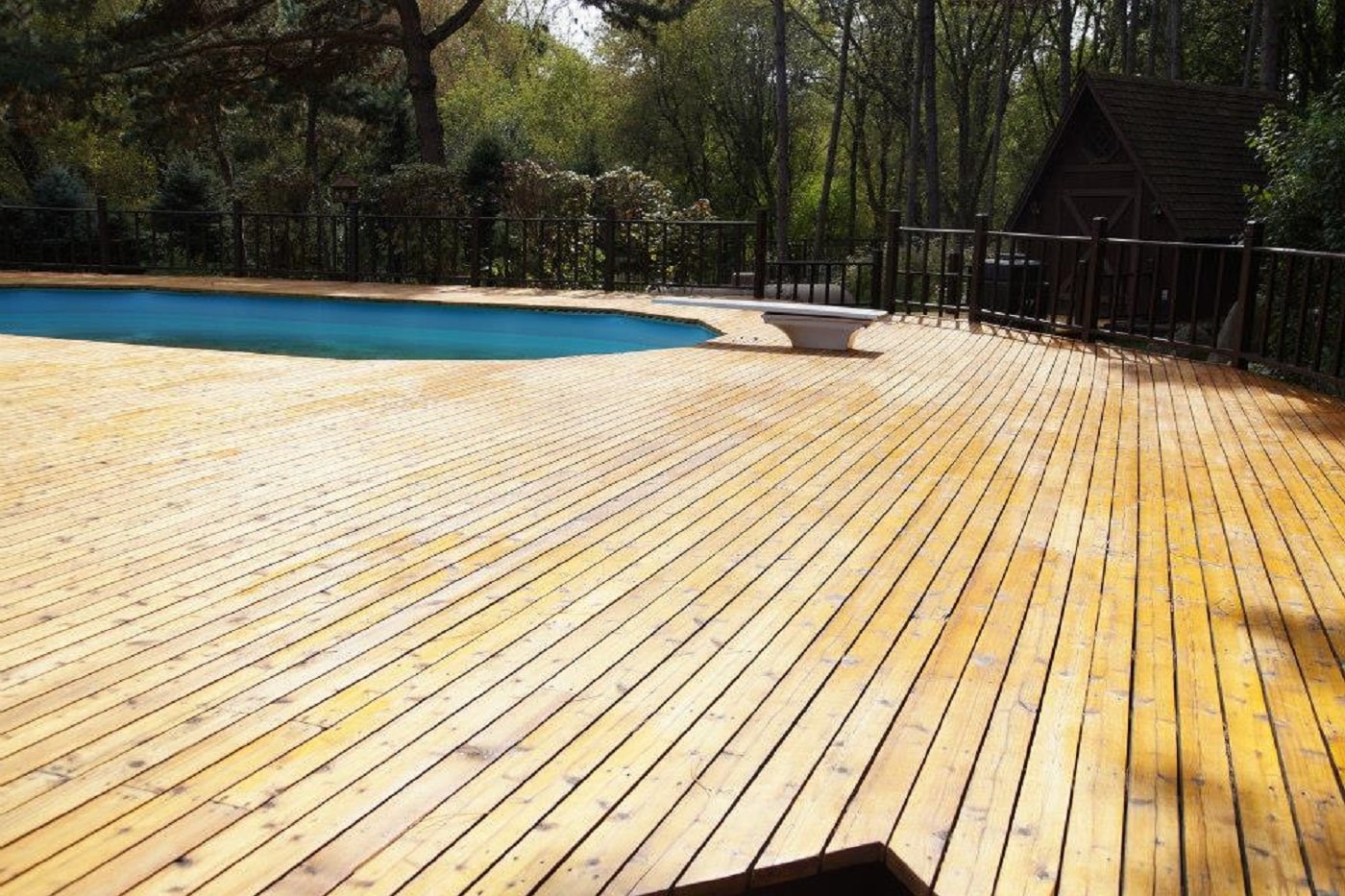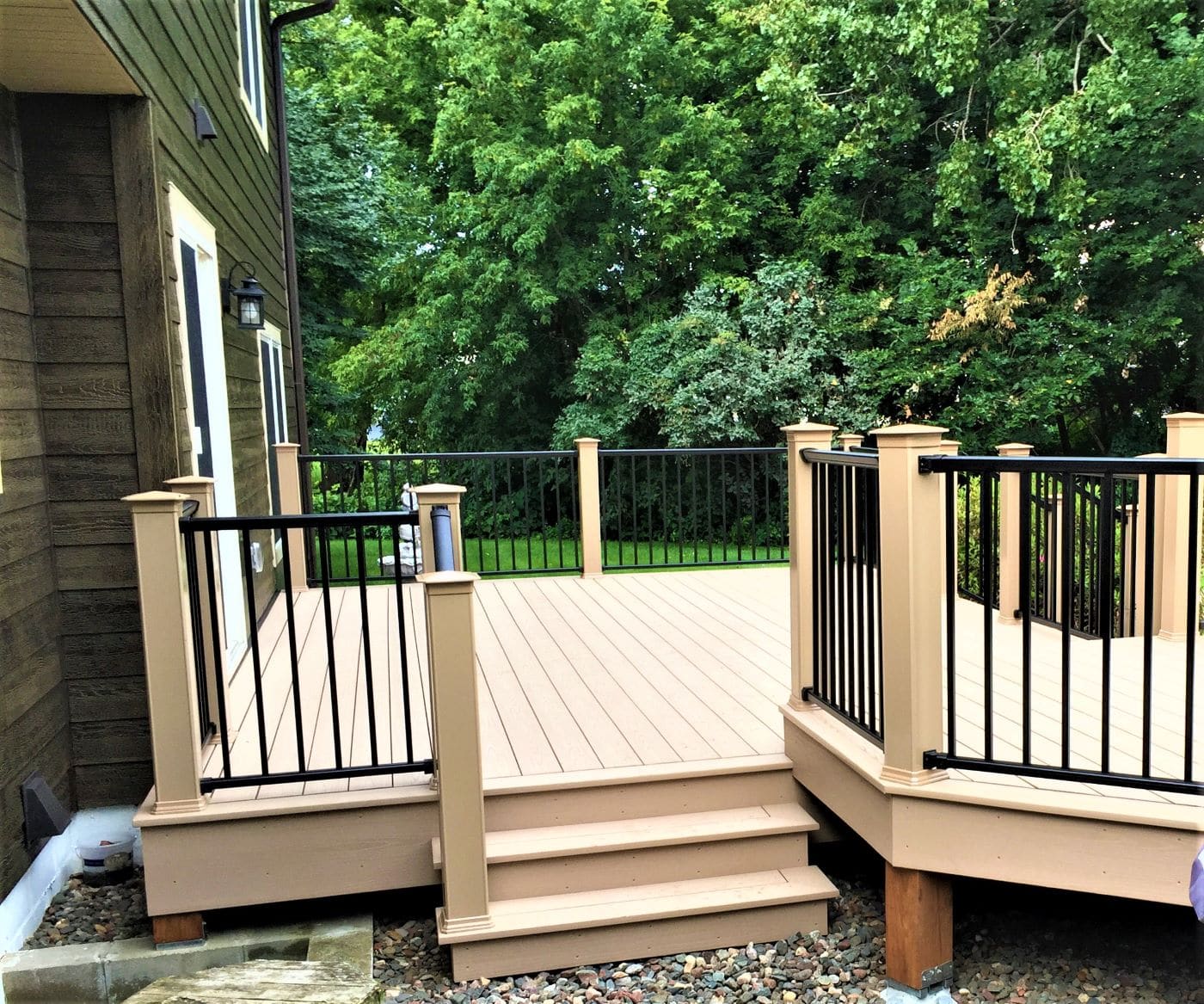A Guide to Minnesota Decks: Material Considerations
Our team answers homeowner questions every weekend on WCCO 830 AM from 9:00 am-10:00 am. Have your most pressing home improvement questions answered by calling or texting 651-461-9226. Here’s must-know information from our in-house deck specialist, Luke Panek, shared on 2.29.20.
When Selecting Deck Footings, Consider Your Environment
Clay and silt soil hold more moisture than other types which can cause footings (one of the many parts of a deck) to heave up from the ground after installation. While the deck may not shift as the seasons turn, footings that are several inches out of the ground create an eyesore. In order to remedy the situation, a temporary beam should be placed underneath the deck. Next, the deck can be lifted with jacks to alleviate the pressure off the deck posts. Once this has been done, the deck posts can be cut as much as needed in order to make it level. The deck can then be dropped down and then put back in place. This should only be done if the deck footings have not moved for a substantial amount of time. If deck footings continue to move, they likely need full replacement. Learn more about our deck building and installation capabilities.
Go Behind the Scenes on a Deck Installation Project Completed by Our Craftsmen:
Decking Material & Maintenance: Cedar, Ipe
It cannot be stressed enough that homeowners opting for cedar decks must be prepared for routine maintenance in order to keep it looking its best, especially when building a deck in Minnesota. Without regular maintenance, cedar decking can rot in as little as five years because the ends of the deck boards will wick moisture, soften, and grow mold. Cedar wood is an extremely porous decking material. Heavy coatings should not be used to preserve a cedar deck because the solid finish cannot keep up with the deck’s expansion and contraction throughout the seasons. It is only a matter of time before the solid finish begins to chip off. Semi-transparent or lighter finishes work better because they do not build a film over time, which will eventually blister off. Before applying a finish, the deck should be sanded.

The staining guidelines vary slightly for homeowners with Ipe decking. Ipe is a South American Walnut that is seven times harder than Oak. Using the correct product on this type of deck is imperative and it’s wise to use a stain made especially for this type of wood, from a manufacturer such as Penofin.
Evaluate Different Types Of Deck Railings
While many homeowners put deep thought into the color of their decking material, they often take for granted the importance of the deck railing color. Railing color dictates whether your view will be open or restricted. A darker color will promote an expanded view and a lighter color will lessen what you’re able to see beyond the deck. While a costly option, stainless steel railings with metal cables also promote an expansive view. Glass balusters should be used over full sheets of glass, which can restrict airflow.

Understanding Underdeck Systems
When it comes to underdecking, it’s a rare occurrence to find a system that’s completely waterproof in the Midwest. This is due to the seasonal freeze/thaw process Minnesota decks endure. However, one of the more reliable systems is called Inside Out Underdecking and is made by Quality Edge. It is comprised of aluminum and has the appearance of a tongue and groove ceiling. Homeowners appreciate that the underdeck system is available in an array of colors.
